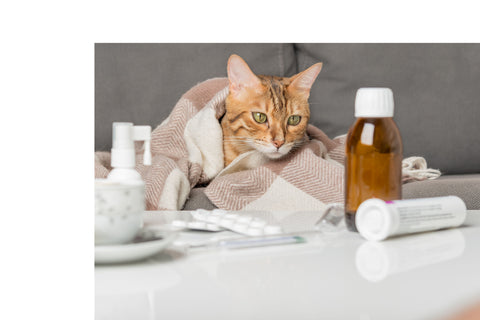
We're sharing details about an exciting improvement to the Basepaws report—one that helps us capture an even clearer picture of the colorful and unique "landscape" of your kitty's genome! Get all the details about this new update related to the genetic traits that are responsible for your cat's fabulous appearance in today's blog.
Finding Genetic Markers in Your Cat's DNA
When we analyze your cat’s DNA, part of our analysis focuses on comparing specific regions of interest from your cat’s genome to their corresponding regions on the feline reference genome. We are looking for exact matches between your cat’s DNA and two versions of the reference DNA sequence—one that contains the genetic markers we want to see and one that does not.

This is done to see whether your cat carries a specific genetic marker and, if so, how many copies it carries. However, sometimes the original framework that we use to capture information about the regions that contain genetic trait markers needs to be adjusted. An analogy is a photographer adjusting the camera lens, so that they can fine tune things like the focusing distance and amount of light that enters the camera. Both affect the level of clarity one can capture in an image.
Luckily, Basepaws uses DNA sequencing technology that gives us the flexibility to make such adjustments, which is important because there are still many exciting discoveries to make in the field of feline genetics!
What Are The New Discoveries?
For the traits in the list below, when we adjusted our "lens", we found brand new genetic variants that were very close to the locations where we find the known genetic variants associated with these traits.

- Short tail (T gene)
- Curly coat (LPAR6 gene associated with the Cornish Rex breed)
- Siamese coat color (TYR gene)
- Long hair coat (FGF5 gene)
The Many "Colors" of Your Cat's DNA Landscape
Let's continue with another analogy. Imagine your cat’s genome as a colorful landscape. The new variants we found have their own unique colors—colors that are different from those of the variants we previously knew about for the four traits.

The colors of these new variants were our beginning to alter our original view of the landscape. We realized that the way we had our lens focused was no longer able to clearly capture some of the cats who did carry variants linked to the four traits. This is because their DNA sequence was not an exact match for—or in our analogy, did not have the same “color” as—any of the reference sequences and known “colors” that we compared it to.
To correct for this, we adjusted and refocused our lens to capture a wider view of these regions of the landscape to see all of the variants/colors in relation to each other, so that both the new and the previously known genetic markers for these traits could be clearly seen together.
What Does This Mean For My Cat's Report?
This means that when you next log into your customer portal, you may see changes to one or more of your cat’s results for the short tail, Siamese coat color, curly coat (Cornish Rex variant), and/or long hair coat traits. As always, if you have any questions about your cat's Basepaws report, please reach out to our customer service team at meow@basepaws.com



